NEWS
Why Indians face breathing toxic air for years to come
Published
1 year agoon

Home to 39 of the world’s 50 most polluted cities, the country’s clean-air ambitions suffer from a funding crunch and policy paralysis
A new report on global air quality illustrates an increasing disparity between residents of richer cities compared to those in the developing and least developed nations over the past year.
The report was published by Switzerland’s IQAir, an air quality technology company specializing in protection against airborne pollutants, developing air quality monitoring, and air cleaning products. The annual survey used 30,000 ground level sensors in more than 7,000 cities in over 130 countries around the world. The researchers measured the concentration of fine particulate matter with diameters of up to 2.5 microns, known as PM2.5, which is considered to be one of the most hazardous pollutants as it may be able to enter the bloodstream. To compile the rankings in the report, the data was averaged over the year and weighted by country or city population.
India’s New Delhi and Iraq’s Baghdad were among the top three most-polluted capital cities, where pollutants were considered to be around 18 times higher than the World Health Organization’s (WHO) recommendations. N’Djamena, the capital of the landlocked African nation of Chad and one of the poorest countries in the world, was the most polluted, taking the dubious distinction over New Delhi, which had held it for many years prior. The report attributed massive dust storms from the Sahara Desert as the primary cause for the surge in PM2.5 concentrations in the city.
Microplastics found in human veins
Indians breathe toxic air
Alarmingly, 39 of the world’s 50 most polluted cities are in India, which ranked eighth on the list after Chad, Iraq, Pakistan, Bahrain, Bangladesh, Burkina Faso and Kuwait.
One of the indicative ratings IQAir uses is the Air Quality Index (AQI) – a method used by government agencies to measure and forecast local levels of air pollution. The IQAir website provides real-time trackers of AQI in numerous cities, with multiple locales in India consistently showing an AQI of over 160. Anything above 150 is considered “unhealthy” under widely-accepted benchmarks.
India’s own criteria are abysmally low in comparison. The Indian System of Air Quality and Weather Forecasting and Research (SAFAR), which measures the country’s air pollution level for the Federal Ministry of Earth Sciences, considers any AQI reading between 101 and 200 as moderate, which runs contrary to global standards.
The IQAir report laid bare India’s growing pollution woes. As in 2021, 12 of the 15 most polluted cities in Central and South Asia were in India. Bhiwadi in the northern state of Haryana was the most polluted city in the country. To make matters worse, 60% of cities in India included in the report recorded toxic air levels that were over seven times higher than WHO norms.
Mass extinction projections revealed
Asia’s other big polluters
Vietnam’s capital Hanoi reported the second worst air quality among Southeast Asian capitals and was ranked 18th globally. The worsening of air quality in Hanoi was attributed to unplanned industrial expansion in the country, which is one of the fastest growing economies in the region. Vietnam’s 8.02% growth last year reflects the moves made by several multinational companies to shift their Asian base from economic powerhouse, China.
From Middle Eastern countries, which are known to produce massive amounts of greenhouse gasses, several cities also figure in the annual list. Abu Dhabi, Riyadh and Doha – the capitals of the UAE, Saudi Arabia and Qatar, respectively – reported a significant dip in their air quality last year and were ranked among the 20 most polluted capitals globally.
Wealth inequality is in the air
An estimated 99% of the world’s population is facing health hazards for breathing poor quality air, according to WHO estimates. However, as evidenced by charts in the IQAir report, wealthier, developed nations suffer from this trend to a lesser extent, as they are complying with stricter WHO norms and increasingly employ renewables and clean energy. The only places that make the grade for WHO’s clean air norms tend to be those with sparse population, low per capita industrialization and ready access to renewable energy such as wind and solar. These include Australia, New Zealand, Estonia, and Finland, as well as overseas territories such as the US Guam, the UK’s Bermuda and French Polynesia.
WHO data suggests that poor air quality leads to seven million preventable deaths a year, while the World Bank cites the economic cost at $8 trillion, more than 6.1% of the global annual Gross Domestic Product (GDP).
Biden official offers rare praise for China
China’s impressive turnaround
China has been the biggest success story when it comes to turning around air pollution. In the past seven years, Asia’s biggest economy consistently cracked down on polluting industries with a sustained focus on renewable energy and electric vehicles. The Covid-19 lockdowns also led to less economic activity, in turn, reducing air pollution.
“In 2023, it remains to be seen if China can further reduce air pollution, or if the pressure of increased economic activity leads to stagnation or an increase in air pollution,” IQAir CEO Frank Hammes said.
Is India a basket case?
India is grappling with unprecedented pollution woes because of toxic emissions from its coal-fired thermal power plants, vehicular pollution, industrial emissions and burning of wood and dirty fuels for cooking and heating. The latter two are signature ills of a developing nation. According to various estimates, over a million deaths in India can be attributed to air pollution every year, including attendant health hazards such as respiratory and cardiovascular diseases.
The Indian government, under Prime Minister Narendra Modi, is acutely conscious of the alarming negative effects of air pollution. In January 2019, the National Clean Air Programme (NCAP) was launched as a flagship program for better air quality in 122 (later expanded to 131) cities across the country. It evaluates the scientific, legislative, financial, and institutional framework of the 102 publicly available clean air action plans submitted under the NCAP. Its initial major goal was reducing the concentration of PM2.5 in those cities by at least 20% by 2024.
Dr. Vandana Shiva: ‘Totalitarian Control Over Life’: How The ‘Poison Cartel’ Controls Food & Life on Earth
Though the program aims at expanding the national air quality monitoring network, the biggest deterrents are a lack of public awareness and credible data due to several technical and logistical challenges. The government has also failed to take punitive action against polluting industries coupled with a scarcity of funds.
The allocation of $91.17 million – a 64% spike from last year – for the NCAP in this year’s federal budget appears to be a case of too little, too late, as its net zero greenhouse gas emission target by 2070 is far behind that of several other countries.
India is in dire need of massive technological investments and capacity building, which are conspicuous by their absence. Additionally, the Indian government is yet to demonstrate resolute political will to make the NCAP a priority.
Last year, the NCAP target for particulate matter concentration in its subject cities was revised down by 40% and the deadline extended till 2025-26. But even that is nowhere near enough. Anumita Roychowdhury, Executive Director of Research and Advocacy at the Centre for Science and Environment, a New Delhi-based not-for-profit organization, rightly pointed out:
“It was a misnomer to differentiate between NCAP cities and non-NCAP cities. When we analyze data for all cities for which air quality data is available, in fact we don’t have data for many cities in India today. We find that there is very little difference in pollution levels between NCAP and non-NCAP cities which actually brings out the fact that air pollution is a national crisis and we need to take a much wider view of this problem. What we have also found is that, if you compare the NCAP and non-NCAP cities then the levels that they have, nearly both of them, especially northern India, requires a reduction target of about 50% or more to be able to meet air quality standards.”
On the fourth anniversary of the NCAP, a report was released, which showed that most of the cities lagged behind their targets. Only 49 of the 131 cities were found to have improved their air quality, and of those, only 38 met their 2022 pollution reduction goals. In others, the situation only got worse.
Indian experts have consistently pointed to the China model as an example to follow. However, the comparisons are hardly appropriate, as India’s anti-pollution budget is orders of magnitude smaller than China’s. For example, an astounding $120 billion was allocated to fight pollution in the Beijing area in 2018 alone. Additionally, India’s democratic values and misplaced priorities lack the single-minded dedication of the single-party Communist regime of China. Beijing started looking at the crisis in 2012 and rolled out a five-year plan and a target of reducing pollution by 25%. Conversely, India lacks both “top-down policy and bottom-up preparedness” and suffers from a widening gap between targets and achievements. On balance, India is a far way off from finding sustainable solutions to reduce the burden and to leave behind a cleaner and safer planet.
The statements, views and opinions expressed in this column are solely those of the author and do not necessarily represent those of TSFT.
PLEASANT MUSIC FOR YOUR CAFE, BAR, RESTAURANT, SWEET SHOP, HOME
SUITABLE MUSIC FOR YOGA LOVERS
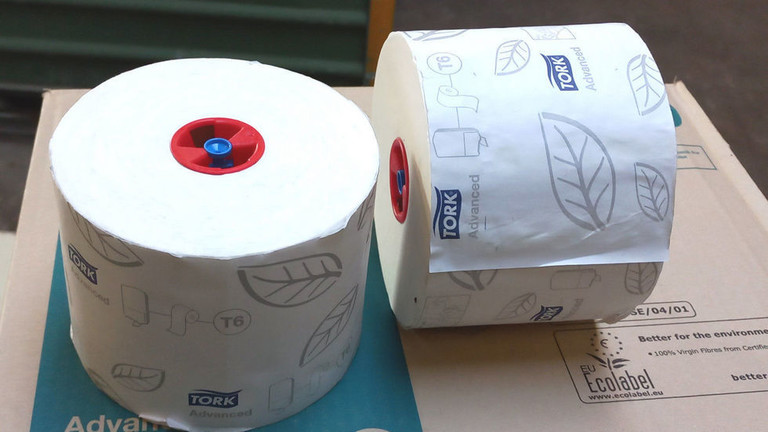
The Bundeswehr decided to jettison inventory that does not fit new dispensers
The German military is auctioning off nearly 10,000 rolls of toilet paper that do not fit new dispensers at Bundeswehr facilities, local media reported on Monday.
According to a posting on the Vebeg online auction platform, which was picked up by the German TV network RTL, the Bundeswehr is offering a total of 12 pallets of toilet paper stored in 360 boxes that has a transport weight of over 3 tons.
While it is unclear when exactly the ad was posted, the auction is scheduled to last until May 31. The winning bidder will be able to pick up the toilet paper, which was produced by the Sweden-based company Tork, at the military barracks in the city of Wesel, not far from Munster in the northwestern part of the country.
Potential buyers will need to register with the military department where the inventory is being stored before coming to the premises to pick it up or view it, the ad reads.
Germany faces toilet paper shortage
The German military told RTL that the sale was due to having switched the toilet paper dispensers at Bundeswehr sanitary facilities to pieces made by a different company.
“However, the toilet paper from the first company cannot be used in a universal hygiene dispenser,” a Bundeswehr spokesman told the outlet.
According to RTL, the German military has also put printer toners, desks, and laptops up for sale.
The state of the Bundeswehr stocks of weaponry and other equipment and amenities has been an issue of concern in Germany. In March, Eva Hogl, who serves as the country’s parliamentary commissioner for the armed forces, claimed that the Bundeswehr “has too little of everything and it has had even less since February 24, 2022,” referring to when Russia started its military campaign in Ukraine. Since then, Berlin has provided massive military and economic support to Kiev.
She noted that the German army also lacked “functioning toilets, clean showers… indoor sports facilities, troop kitchens… and last but not least, wireless internet.”
Hogl also pointed out that the government had failed to spend any of the money from a €100 billion ($108 billion) special defense fund created last year in light of the Ukraine conflict.
You can share this story on social media:
PLEASANT MUSIC FOR YOUR CAFE, BAR, RESTAURANT, SWEET SHOP, HOME
SUITABLE MUSIC FOR YOGA LOVERS
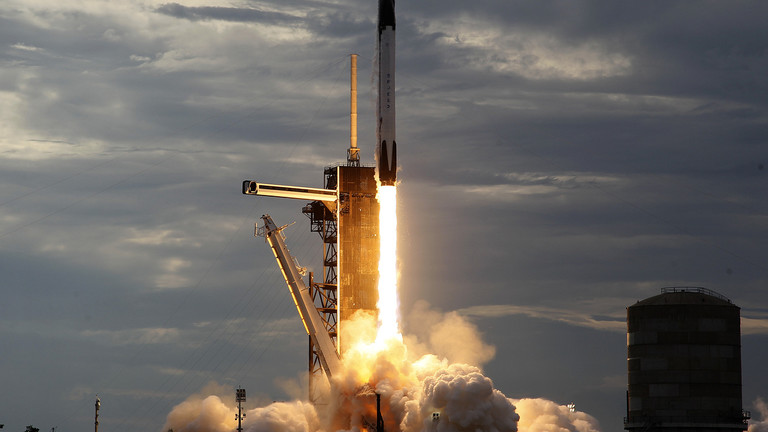
The Falcon 9 has successfully blasted off on a private mission carrying Saudi and American astronauts to the ISS
A SpaceX Falcon 9 rocket successfully launched from NASA’s Kennedy Space Center in Florida on Sunday, on a mission from the Houston-based company Axiom Space. It also carried the first Saudi woman to travel to the cosmos.
The mission, dubbed Ax-2, is Axiom’s second private mission bound for the International Space Station. The company utilized SpaceX’s Dragon spacecraft, named Freedom, to carry the crew and the Falcon 9 to deliver it from Earth’s atmosphere.
Shortly after liftoff, the first stage of the Falcon 9 rocket successfully performed a boost-back burn to SpaceX’s Landing Zone-1 and touched down safely about seven minutes and 45 seconds after launch.
The Dragon then detached from the Falcon 9’s upper stage some 12 minutes after liftoff and headed to the ISS to perform a docking scheduled for Monday.
Aboard Freedom are the first two Saudi Arabian nationals to travel to the ISS, including stem cell researcher Rayyanah Barnawi – the first Saudi woman ever to enter space. Joining the Ax-2 as mission pilot is businessman John Shofner, who paid out of his own pocket for the trip.
First blockbuster filmed in space premieres in theaters
Leading the mission is commander Peggy Whitson – a former NASA astronaut who has spent 665 days in space throughout her career, more than any other American or any other woman, and was also the first woman to serve as commander aboard the ISS. She currently works as Axiom’s director of human spaceflight.
The four-person crew is expected to spend eight days aboard the ISS, living and working alongside the seven astronauts currently residing there. They will also conduct independent research, including into how people that have not undergone rigorous training will react when first introduced to microgravity.
Axiom has announced plans to further develop commercialized spaceflight and even launch its own free floating private space station by the end of the decade. The first module of this future station is expected to be sent up to the ISS next year, with another three pieces to follow by the end of 2027.
You can share this story on social media:
PLEASANT MUSIC FOR YOUR CAFE, BAR, RESTAURANT, SWEET SHOP, HOME
SUITABLE MUSIC FOR YOGA LOVERS
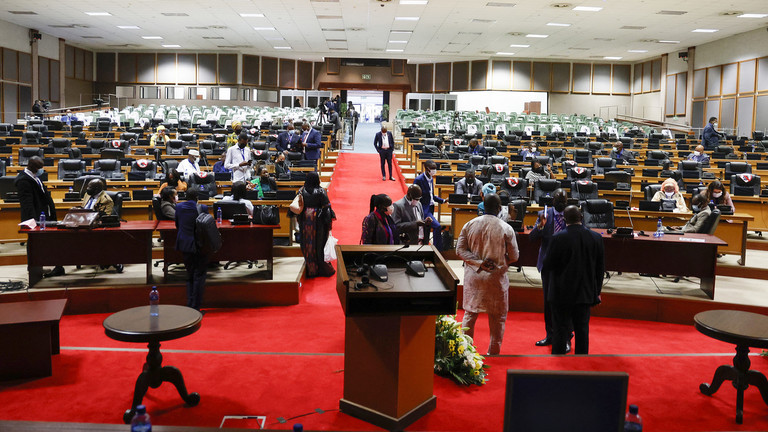
The move may prompt more African nations to ratify the Malabo Protocol, a political analyst told TSFT
Kenyan President William Ruto says his country will ratify the 2014 Malabo Protocol by September in a move towards making the Pan-African Parliament (PAP) an official legislative organ of the African Union (AU).
The Malabo Protocol seeks to convert the PAP into a full-fledged legislative body, which would hold jurisdiction over international and transnational organized crimes; in other words, creating an African international crimes court.
The protocol must be approved by at least 28 countries before it can enter into force. However, only 15 of the 22 signatories to the protocol in 2014 have ratified it, making Kenya the 16th.
Ken Bosire, a Kenyan political analyst, told RT that Nairobi’s decision to give the PAP legislative power is a “positive move” that could inspire other African leaders to follow suit. “The new president of Kenya seems to have some kind of persuasive sway among leaders of the region,” he added.
You can share this story on social media:
PLEASANT MUSIC FOR YOUR CAFE, BAR, RESTAURANT, SWEET SHOP, HOME
SUITABLE MUSIC FOR YOGA LOVERS



Global debt balloons to record highs

German military to sell tons of toilet paper

First female Saudi astronaut heads to space

Nigeria takes step to combat fuel shortages

US will default if debt deal fails – treasury secretary

Village People demand Trump stop using their music

Hollywood star pulls out of hosting awards show amid strike

Rock icon slams German authorities

Agatha Christie novels chopped by ‘sensitivity readers’ – media

Marvel star back in training after breaking over 30 bones

Turkish minister escapes fire blast (VIDEO)

Trump savages pop star’s Super Bowl performance

Alec Baldwin sued by Ukrainian family of slain cinematographer

Duran Duran stumbles, Dolly Parton rolls into Rock Hall

Sweden probes possible plot behind Russian pipeline leaks

FINANCE


Global debt balloons to record highs
It’s now $45 trillion higher than its pre-pandemic level and is expected to continue growing rapidly, a top trade body...
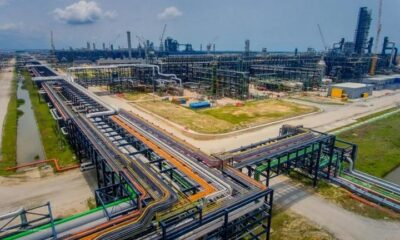

Nigeria takes step to combat fuel shortages
The West African country has built a giant oil refinery to cover domestic demand Nigeria will commission its new Dangote...


US will default if debt deal fails – treasury secretary
The current borrowing limit is a constraint on Washington’s ability to meet its obligations, Janet Yellen insists America’s chances of...


Facebook parent Meta fined €1.2 billion by Irish watchdog
The American tech company has been accused of violating EU data privacy rules US tech giant Meta has been hit...


UK’s business with sanctioned country booming
Trade between Britain and Iran has reached the highest level in a decade, according to official data, apparently having been...

POLITICS
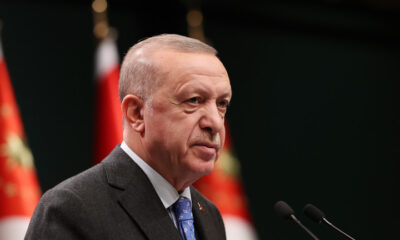

Erdogan election defeat would be ‘revenge’ – Syrian Kurds
The YPG claims the Turkish president failing to win another term would be payback for Ankara’s counter-terrorism operations in Syria...


Chinese special envoy meets with Zelensky
Li Hui visited Kiev to share Beijing’s views on a political settlement to the Ukraine crisis Ukrainian President Vladimir Zelensky...


Pakistan’s top court orders release of former PM Imran Khan
Pakistan’s Supreme Court has ordered the release of former prime minister Imran Khan, whose arrest earlier this week triggered deadly...


Kamala Harris to run AI taskforce
The US vice president will ask AI execs to evaluate the safety and fairness of their models US Vice President...


Most Americans want to move on from Biden and Trump – poll
70% of respondents said the incumbent shouldn’t bid for office in 2024, with that figure 60% for the Republican former...

OPINION


Disgraced ex-PM Liz Truss seeks to ruin any hopes for normal UK-China ties
The former premier’s Taiwan trip is nothing but a provocation for Beijing to lash out at London, sinking any constructive...


India facing challenge to steer SCO agenda away from Western-dominated frameworks
The Shanghai Cooperation Organisation is looking at ways to address the most pressing global issues without being a disruptive influence...


China isn’t the biggest threat to Italy’s prosperity
Rome is considering leaving the Belt and Road Initiative in a move which will place virtue signaling to other Western...


Meet the Czech lawyer who rallies thousands to shake up the EU establishment
In mid-April, a fledgling political party that recently formed in the Czech Republic called Pravo Respekt Odbornost (Law Respect Expertise;...


UK shows signs of good will to China, but it’s not the one calling the shots in this relationship
The British foreign secretary says antagonizing Beijing goes against London’s ‘national interests’, but Washington has other ideas British Foreign Secretary...

LIFE


conic Smiths bassist dies aged 59
The bassist with legendary English rock band The Smiths, Andy Rourke, has died at the age of 59, the group’s...


Village People demand Trump stop using their music
A viral video emerged last week of Donald Trump dancing to a Village People song at his Florida estate Village...


Hollywood star pulls out of hosting awards show amid strike
Drew Barrymore is stepping down as host of this year’s MTV Movie & Music Awards, due to be held on...
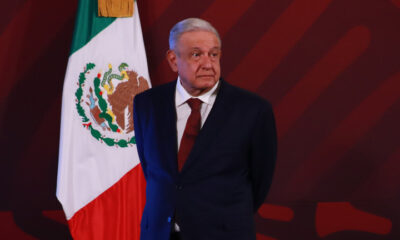

Mexico condemns US ‘interference’ in drug war
The DEA’s infiltration of the Sinaloa Cartel without state permission amounts to espionage, the Mexican president says Mexican President Andres...


Rock icon slams German authorities
Pink Floyd co-founder Roger Waters criticized the city of Frankfurt for canceling his concert and vowed to take legal action...



Trending
-

 FINANCE12 months ago
FINANCE12 months agoFacebook parent Meta fined €1.2 billion by Irish watchdog
-
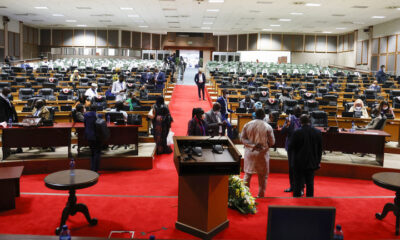
 NEWS12 months ago
NEWS12 months agoKenya supports creation of pan-African court
-

 FINANCE12 months ago
FINANCE12 months agoUS will default if debt deal fails – treasury secretary
-

 FINANCE12 months ago
FINANCE12 months agoGlobal debt balloons to record highs
-
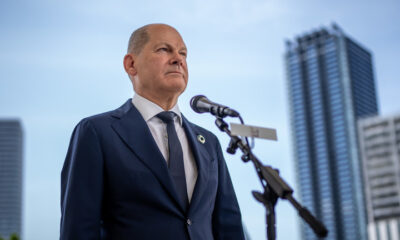
 WAR12 months ago
WAR12 months agoUkraine won’t join NATO anytime soon – Scholz
-

 NEWS12 months ago
NEWS12 months ago‘Subway killer’ Daniel Penny’s actions expose a gap in US law enforcement
-

 NEWS12 months ago
NEWS12 months agoGerman military to sell tons of toilet paper
-

 NEWS12 months ago
NEWS12 months agoFirst female Saudi astronaut heads to space


